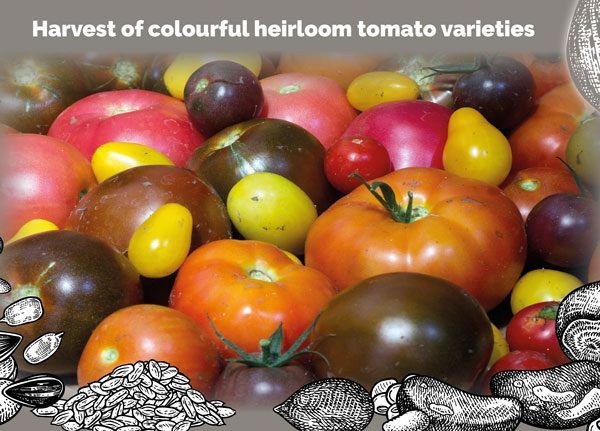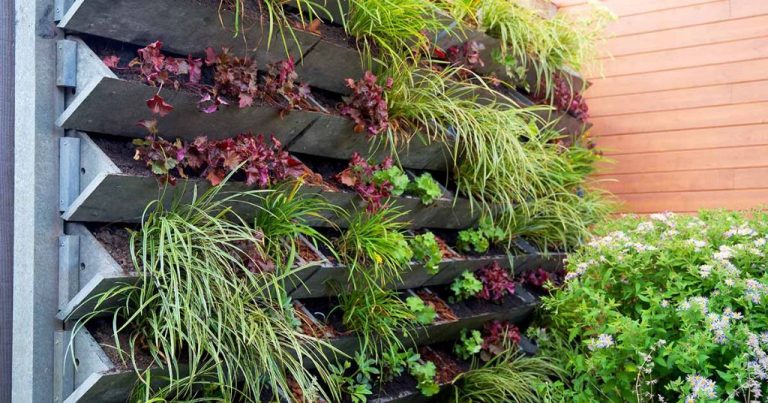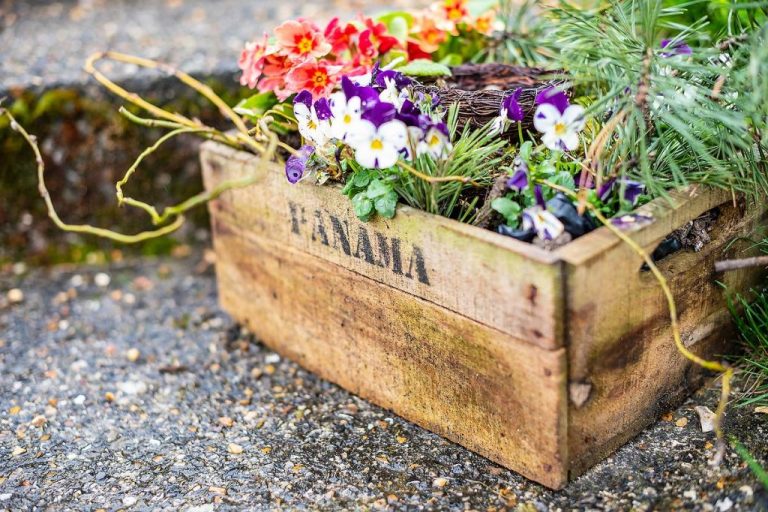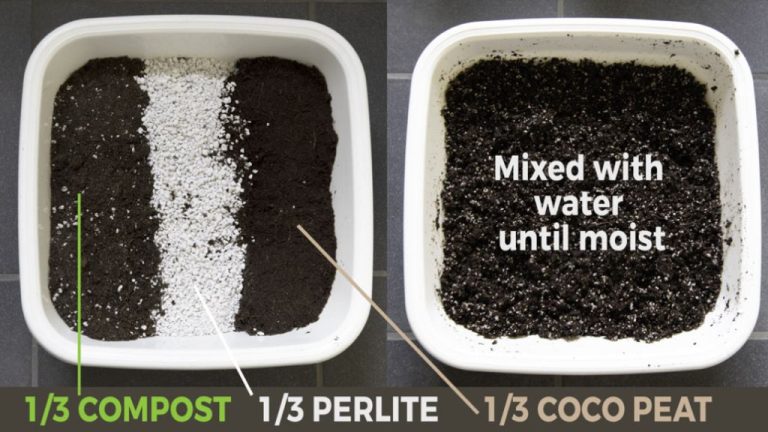Urban Seed Saving: Preserving Biodiversity In City Gardens
Urban seed saving is the practice of preserving seeds from fruits, vegetables, and flowers grown in city gardens and urban farms. It serves the crucial purpose of maintaining genetic diversity and protecting heirloom varieties that may not be commercially available. As urbanization spreads and locally adapted plant varieties decline, seed saving takes on heightened importance for sustaining biodiversity.
When gardeners save seeds year after year, plants can continue adapting to specific urban conditions like soil contamination, air pollution, and localized climate effects. Urban seed savers preserve history and culture by passing down beloved plant varieties within communities. Seed libraries, seed swaps, and other programs engage citizens in valuing seeds as a living inheritance to be nurtured and shared.
This article will explore best practices in urban seed saving, from beginning steps to advanced techniques. We’ll hear from seed savers working to sustain biodiversity in cities through education, community building, and promoting indigenous plants. Urban seed saving not only conserves genetic diversity—it empowers people to shape more ecologically thriving cities.
Challenges of Seed Saving in Cities
City gardens present unique challenges for seed savers. Space constraints mean city gardeners have less room to dedicate to seed crops or to isolation distances between plant varieties. Pest problems may also be more prevalent, with higher populations of insects, rodents, birds, and other urban wildlife that can damage ripening seed pods and heads before they are ready for harvest (Davies, 2022).
Municipal bylaws and zoning regulations may restrict what you can grow, how tall it can be, and other rules. Always check local ordinances if you want to save seeds. Homeowner association rules for apartments, condos and townhouses could also limit growing seed crops (Garden Culture Magazine, 2019). While challenging, savvy city gardeners are finding creative ways to overcome obstacles and contribute to seed diversity.
Best Practices for Beginners
For those just starting out with urban seed saving, it’s best to begin with easy crops that are open-pollinated and self-pollinating like beans, peas, tomatoes, and lettuce according to this source. These plants are unlikely to cross with other varieties, making it simpler to save pure seeds.
It’s also important to properly isolate the plants you want to save seeds from. Make sure they are separated from other varieties of the same crop by at least 10-30 feet depending on factors like pollination method. You can also isolate plants by timing – grow early and late blooming varieties of the same crop. Additionally, use physical barriers like rows of tall plants to isolate crops.
When the seeds are mature, harvest them individually from the healthiest plants. Let seeds dry fully after harvesting before cleaning and storing them. It’s recommended to store seeds in airtight containers in a cool, dry location to maintain viability according to this guide. Freezing the seeds for a few days before storage can kill any remaining insect eggs or larvae.
Following basic guidelines for choosing crops, isolation, harvesting, and storage will set beginning seed savers up for success.
Going Beyond the Basics
Once you’ve mastered the basics of seed saving like selecting healthy plants, isolating varieties, and proper harvesting and storage, you can take your urban seed saving efforts to the next level through selective breeding, seed banks, and swaps.
Selective breeding allows you to breed plants with desirable traits over successive generations. By saving seeds from the healthiest, most productive plants each season, you can gradually develop varieties well-adapted to your local growing conditions. This is especially useful for increasing disease resistance. Refer to resources like How To Save Seeds – Advanced for more tips on selective breeding.
Participating in local seed banks and swaps is another way to access a wider diversity of plant varieties. Seed banks function as libraries where gardeners can “check out” seeds to grow and later return some of the harvested seeds for others to borrow. Swaps allow urban gardeners to share their saved seeds and exchange different varieties. Both networks help preserve rare, heirloom, and locally-adapted seeds.
Case Studies of Urban Seed Savers
Urban seed saving efforts take many forms, from individuals conserving rare varieties in home gardens to community projects dedicated to education and biodiversity.
Brijette Peña founded San Diego Seed Company on just one acre of land. She trials, breeds, and produces certified organic, regionally adapted vegetable and herb seeds. Her urban farm helps preserve genetic diversity while also supporting pollinators and beneficial insects.
In London, the Garden Classroom project partners with schools to teach seed saving skills. Students learn the science behind pollination and life cycles while getting hands-on experience harvesting, cleaning, and storing seeds. They help conserve rare UK heritage varieties.
Community gardens in cities provide space for both education and seed production. Groups like the Toronto Seed Library run workshops on seed collection and host “seed swaps” where gardeners can share locally adapted seeds. This helps strengthen networks of urban seed savers.
Unique Opportunities in Cities

Urban areas provide unique opportunities for seed saving that are not as readily available in rural settings. One major advantage is access to rare seed varieties from around the world. Cities tend to have more diverse populations, which means gardeners in urban areas may grow and save seeds from plants originating in other parts of the globe.
For example, an immigrant community from a specific region may grow traditional varieties from their homeland that would be difficult to find elsewhere. By saving and sharing these seeds, urban gardeners can help preserve genetic diversity and pass on culturally significant plants (Urban Seed. “About.” https://urbanseed.info/about/).
Another opportunity offered by cities is education. Urban farms, community gardens, seed libraries, and other programs provide hands-on learning about seed saving. Workshops teach beginner skills like harvesting and cleaning seeds, while more advanced training covers topics like isolation distances and maintaining pure strain lines (Nourish Project. “Become an Urban Seed Saving Steward!?” https://nourishproject.ca/become-urban-seed-saving-steward/).
These educational efforts aim to empower residents to save their own seeds and share knowledge across generations. Passing on seed saving practices helps ensure the continuation of biodiversity within cities.
Supporting Native Plants and Wildlife
Urban seed saving provides important benefits for local wildlife like bees, birds, and butterflies by increasing biodiversity in city gardens. Native plants are essential for supporting native pollinators and providing habitat and food sources. According to the University of Maryland Extension, over 97% of bees are solitary ground nesters, and 70% of butterfly and moth caterpillars are dependent on native plants [1]. Saving seeds from native species allows gardeners to propagate more native plants that are adapted to local environmental conditions.
The Nanps Organization explains that native plants have coevolved with native wildlife over thousands of years, leading to intricate connections and interdependencies [2]. Providing native plant habitats in cities can serve as oases and stopover sites for migrating birds and butterflies. Native plants also support complex soil food webs below ground. By saving seeds and expanding our native gardens, urban seed savers can make a difference for biodiversity right in their neighborhoods.
Teaching the Next Generation
Urban gardening and seed saving provide excellent opportunities to teach children about where food comes from and the life cycles of plants. Getting youth involved in seed saving builds knowledge and engages the next generation of urban farmers and environmental stewards. According to Save Your Seeds, teaching children how to properly store seeds helps them understand seasonality and food preservation. School gardens serve as living laboratories where students can learn hands-on through planting, harvesting, and saving seeds.
Organizations like KidsGardening provide resources for educators on gardening activities like seed saving that connect children with nature and spark curiosity about plant life cycles. These types of programs teach valuable lessons about biology while producing seeds that can be replanted year to year. With guidance, students can become active participants in preserving biodiversity. According to Gardening Know How, seed saving teaches children patience, responsibility, and pride as they directly contribute to sustaining gardens.
Policy and Legal Considerations
Saving and sharing seeds in urban areas can raise complex legal issues around regulations, property rights, and access. Many countries have laws restricting seed saving, even for personal use. According to Seed laws that criminalise farmers: resistance and fightback, seed fairs and exchanges are becoming illegal in more countries as large seed companies seek to control the market.
However, seed savers and advocacy groups like Seed Alliance are working to support policies that recognize seed saving as an inherent right of agricultural stewards. Their 2023 Policy Platform for Seed calls for the ability of growers to “save, own, and sell seeds” as key leaders in seed development.
In the U.S., seed saving laws vary by state. An overview from Texas A&M AgriLife explains the complexities farmers face in understanding regulations on saved seeds for planting. Urban seed savers should research local laws and partner with experts to ensure compliance.
Looking Ahead
Urban seed saving has an important role to play in preserving agrobiodiversity for the future. As climate change and industrial agriculture threaten crop diversity globally, city gardens can serve as vital repositories of heirloom and indigenous varieties. According to Urban Seed Saving from Change-Making Publications, “Some experts believe that the future of preserving heirloom varieties lies in city gardens.”
By saving seeds adapted to local conditions, urban gardeners help maintain genetic diversity and protect against potential shocks to the food system. As Seed Saving and Sustainability from CSUN states, “Seed saving is a solution to many problems presented by climate change and globalization and has the power to address inequalities in modern food systems.” Community seed banks and exchanges allow urban growers to share precious seeds across neighborhoods and regions.
Continuing and expanding urban seed saving will take dedication from individual gardeners as well as support through public policy. Cities should promote seed saving through community education programs, favorable zoning for gardens, and legal protections for seed sharing. With urban centers growing rapidly worldwide, now is the time to recognize the immense opportunity cities provide to conserve biodiversity for generations to come. Each of us can play a part by simply planting, harvesting, and saving the seeds from our gardens.
To learn more, visit the resources at Change-Making Publications and CSUN’s Seed Saving and Sustainability presentation.






